着物の姿を思い浮かべるとき、多くの人の脳裏に浮かぶのは、色彩豊かで絵画のように美しい模様ではないでしょうか。その優美な着物の代表格こそが、京都の伝統工芸品「京友禅」です。一枚の布の上に、花鳥風月や雅な文様が、まるで物語を紡ぐかのように染め上げられています。京友禅は、単なる染物ではありません。それは、日本の美意識、職人たちの超絶技巧、そして千年の都が育んだ文化の結晶なのです。
- 扇絵師が生んだ革命: 奢侈禁止令の時代に、派手な刺繍や金箔に代わる美として誕生した逆転の発想。
- 分業制というオーケストラ: 図案家から染師まで、各分野の専門家が技をつなぐことで生まれる究極の調和。
- 「糸目糊」の繊細な境界線: 色と色が混じり合うのを防ぐ細い糊の線が、京友禅独特の絵画的な表現を可能にする。
京友禅、美の源流をたどる
京友禅の歴史は、江戸時代の元禄期(17世紀末〜18世紀初頭)にまで遡ります。当時、京都で人気を博していた扇絵師、宮崎友禅斎(みやざきゆうぜんさい)が、自身の画風を着物のデザインに取り入れたのが始まりとされています。
それまでの豪華な着物といえば、刺繍や金銀の箔をふんだんに使ったものが主流でした。しかし、幕府から発令された「奢侈(しゃし)禁止令」により、そうした贅沢は厳しく制限されます。そのような時代背景の中、染めだけで絵画のような華やかさを表現する京友禅は、人々の美への渇望を満たす画期的な技法として、大きな注目を集めました。色の濃淡やぼかしを巧みに使い、まるで絹のキャンバスに絵筆を走らせたかのような表現は、まさに革新的だったのです。

職人たちの技が織りなす総合芸術
京友禅の最大の特徴の一つに、専門の職人たちによる「分業制」が挙げられます。一つの着物が完成するまでには、図案を考える「図案家」、下絵を描く職人、色の調合や彩色を行う「挿友禅(さしゆうぜん)」の職人、地色を染める「引染(ひきぞめ)」の職人など、実に20以上もの工程があり、それぞれを専門の職人が担当します。
例えるなら、京友禅づくりは一つのオーケストラのようなもの。染匠(せんしょう)と呼ばれるプロデューサーが指揮者となり、各工程の職人たちがそれぞれの楽器(技術)を最高の形で奏でることで、一つの見事な交響曲(着物)が完成するのです。この高度な専門性と連携プレーこそが、京友禅の複雑で深みのある美しさを支えています。
伝統の技と未来への挑戦
明治時代に入ると、西洋から化学染料がもたらされ、型紙を使って模様を写し染める「型友禅(かたゆうぜん)」の技術が開発されました。これにより、手描きに比べて量産が可能となり、京友禅はより多くの人々に愛されるようになります。
しかし、現代において京友禅は、着物需要の減少や職人の高齢化、後継者不足といった厳しい課題に直面しています。生産量はピーク時に比べて激減し、伝統の技の継承が危ぶまれているのが現状です。その一方で、伝統を守りながらも新たな活路を見出そうとする動きも活発化しています。京友禅の技術を活かしたアロハシャツやドレス、インテリア製品、小物雑貨の開発や、海外市場への挑戦など、その挑戦は多岐にわたります。
受け継がれる美意識の結晶
京友禅は、その誕生から現代に至るまで、時代の変化に対応しながら、常に最高の「美」を追求してきました。職人から職人へと受け継がれてきた緻密な手仕事の中には、日本人が大切にしてきた自然観や美意識が凝縮されています。その一枚の布に込められた物語と職人たちの魂は、これからも時代を超えて多くの人々を魅了し続けることでしょう。
解説ポイント①:扇絵師が生んだ革命
京友禅が誕生した江戸時代の元禄期は、町人文化が花開いた華やかな時代である一方、幕府による奢侈禁止令で人々の装いは厳しく統制されていました。金糸や銀糸を用いた刺繍、鹿の子絞りといった豪華な技法が禁じられる中で、「どうにかして美しい着物を身にまといたい」という人々の願いは募るばかり。その中で登場したのが、宮崎友禅斎でした。彼は、染料だけで多彩な絵柄を描き出す技法を確立。特に、模様の輪郭に細く糊を置き、染料がにじんで混ざるのを防ぐ「糸目糊(いとめのり)」という技法は画期的でした。これにより、隣り合う色同士がくっきりと分かれ、繊細で絵画的な表現が可能になったのです。それは、規制という逆境の中から生まれた、まさに美のイノベーションでした。
解説ポイント②:分業制というオーケストラ
京友禅の制作工程は、一人の職人がすべてを行うのではなく、各工程を専門の職人がリレー形式でつないでいく完全な分業制で成り立っています。
- 図案・下絵: まず、着物全体のデザインを考案し、青花液(水で消える染料)で白生地に下絵を描きます。
- 糸目糊置: 下絵の線に沿って、筒から糊を絞り出し、防染のための繊細な土手を作ります。この線の太さ一つで、作品の印象が大きく変わります。
- 挿友禅(彩色): 糊で囲まれた部分に、筆や刷毛を使って色を挿していきます。ぼかしや隈取りといった技法を駆使し、立体感や深みを表現します。
- 蒸し・水元: 彩色が終わると、高温で蒸して染料を生地に定着させます。その後、鴨川の清流に代表される京都の良質な水で、余分な染料や糊を洗い流します。「友禅流し」として知られる光景ですが、現在は環境への配慮から主に工房内の人工川で行われています。
- 引染・金彩・刺繍など: 地色を均一に染め上げ、さらに金箔や刺繍などで装飾を加えて完成度を高めていきます。 これほど多くの専門家の手を経るからこそ、他にはない高品質で芸術的な作品が生まれるのです。
解説ポイント③:「糸目糊」の繊細な境界線
京友禅の絵画的な美しさを決定づける最も重要な技法が「糸目糊」です。これは、もち米などから作られた特殊な糊を、柿渋紙で作られた円錐状の筒の先から絞り出し、下絵の線に沿って細く置いていく作業です。この糊が防波堤の役割を果たし、彩色工程で染料が外ににじみ出るのを防ぎます。
最終的に糊を洗い流すと、模様の輪郭に白い線がくっきりと残ります。この繊細な線こそが「糸目」と呼ばれ、京友禅の優美で上品な印象を際立たせるのです。均一な太さで、途切れることなく流れるような線を引くには、長年の修練で培われた熟練の技と集中力が要求されます。この糸目糊があるからこそ、多色を使いながらもすっきりと洗練された、京友禅ならではの意匠が生まれるのです。
参考文献
- 京友禅とは?特徴や歴史、魅力を紹介 – Zen京都
- 京友禅の歴史と魅力 ~日本三大友禅シリーズ~ | バイセルオンラインストアの着物コラム
- 京都の染織物「京友禅」。伝統と革新が織りなす色彩の世界 – Fa-So-La AKIHABARA
- 京手描友禅の工程|株式会社白木染匠
- 京友禅がサリーに挑む!伝統的工芸品に今、世界が注目 – METI Journal – 経済産業省
【English Article】
The Magic of Colors Nurtured by a Millennial Capital: Why Kyo-Yuzen Continues to Fascinate
When you picture a kimono, what often comes to mind are vibrant colors and picturesque patterns. The epitome of such elegant kimonos is “Kyo-Yuzen,” a traditional craft from Kyoto. On a single piece of fabric, motifs of flowers, birds, nature, and graceful designs are dyed as if weaving a story. Kyo-Yuzen is more than just a dyeing technique; it is a crystal of Japanese aesthetics, the extraordinary skill of artisans, and a culture nurtured by the ancient capital of a thousand years.
- A Revolution Born from a Fan Painter: An ingenious idea born in an era of luxury bans, offering beauty as an alternative to flashy embroidery and gold leaf.
- An Orchestra of Specialization: The ultimate harmony created by a relay of skills from designers to dyers, each a master in their field.
- The Delicate Boundary of “Itome-nori”: A fine line of rice paste that prevents colors from bleeding, enabling the unique painterly expressions of Kyo-Yuzen.
Tracing the Origins of Kyo-Yuzen’s Beauty
The history of Kyo-Yuzen dates back to the Genroku era of the Edo period (late 17th to early 18th century). It is said to have started when Miyazaki Yuzensai, a popular fan painter in Kyoto at the time, incorporated his artistic style into kimono designs.
Until then, luxurious kimonos were predominantly adorned with lavish embroidery and gold and silver foil. However, the “Sumptuary Law” issued by the shogunate strictly restricted such extravagance. Against this backdrop, Kyo-Yuzen, which expressed a painterly splendor through dyeing alone, garnered significant attention as a revolutionary technique that satisfied people’s craving for beauty. Its use of shading and gradients, creating an effect as if a paintbrush had been swept across a silk canvas, was truly innovative.
A Collaborative Art Form Woven by Artisans’ Skills
One of the most significant features of Kyo-Yuzen is its “division of labor” system among specialized artisans. The completion of a single kimono involves over 20 processes, each handled by a dedicated craftsman. These include the “zuanka” (designer) who conceives the pattern, the artisan who draws the under-drawing, the “sashi-yuzen” artisan who mixes and applies colors, and the “hiki-zome” artisan who dyes the background color.
You could compare Kyo-Yuzen making to an orchestra. A producer called a “sensho” acts as the conductor, and the artisans of each process play their instruments (techniques) to perfection, resulting in a magnificent symphony (kimono). This high degree of specialization and collaborative play is what supports the complex and profound beauty of Kyo-Yuzen.
Traditional Techniques and Challenges for the Future
In the Meiji era (1868-1912), chemical dyes were introduced from the West, and the “kata-yuzen” technique, which uses stencils to transfer patterns, was developed. This allowed for greater production compared to hand-painting, making Kyo-Yuzen accessible to a wider audience.
However, in modern times, Kyo-Yuzen faces severe challenges, including a decline in kimono demand, an aging artisan population, and a shortage of successors. Production has drastically decreased from its peak, and the continuation of traditional skills is at risk. On the other hand, there are active movements to find new paths while preserving tradition. These challenges have led to diverse initiatives, such as developing aloha shirts, dresses, interior products, and small accessories using Kyo-Yuzen techniques, as well as venturing into overseas markets.
A Crystallization of Inherited Aesthetics
From its inception to the present day, Kyo-Yuzen has constantly pursued the pinnacle of “beauty” while adapting to the changing times. The meticulous handiwork passed down from artisan to artisan encapsulates the Japanese people’s cherished view of nature and aesthetic sense. The stories and the souls of the artisans embedded in each piece of fabric will undoubtedly continue to captivate people across generations.
Analysis Point ①: A Revolution Born from a Fan Painter
The Genroku era, when Kyo-Yuzen was born, was a glamorous period when townsman culture flourished. However, people’s attire was strictly controlled by the shogunate’s sumptuary laws. With luxurious techniques like embroidery with gold and silver thread and Kanoko shibori (tie-dyeing) being banned, the desire for beautiful kimonos only grew. It was then that Miyazaki Yuzensai emerged. He established a technique to draw various patterns using only dyes. The “itome-nori” technique, in which a thin line of paste is applied to the outline of a pattern to prevent dyes from smudging and mixing, was particularly groundbreaking. This allowed adjacent colors to be clearly separated, enabling delicate and painterly expressions. It was truly an innovation of beauty born from the adversity of regulation.
Analysis Point ②: An Orchestra of Specialization
The Kyo-Yuzen production process is not carried out by a single artisan but is based on a complete division of labor, with specialized artisans connecting in a relay-like fashion.
- Design & Under-drawing: First, the overall design of the kimono is conceived, and an under-drawing is sketched onto the white fabric using Aobana ink (a dye that washes out with water).
- Itome-nori Application: Following the lines of the under-drawing, a special paste is squeezed from a cone-shaped tube to create delicate ridges that act as a resist. The thickness of this line can greatly alter the impression of the work.
- Sashi-yuzen (Coloring): Colors are applied with brushes into the areas enclosed by the paste. Techniques like “bokashi” (gradation) and “kumadori” (shading) are used to create three-dimensionality and depth.
- Steaming & Rinsing (Mizumoto): After coloring, the fabric is steamed at high temperatures to fix the dyes. Then, excess dyes and paste are washed away in the high-quality water of Kyoto, famously represented by the Kamo River. This scene is known as “Yuzen-nagashi,” but for environmental reasons, it is now mainly done in artificial rivers within workshops.
- Hiki-zome (Background Dyeing), Gilding & Embroidery: The background is dyed uniformly, and further embellishments like gold leaf and embroidery are added to enhance the final product. It is through these many expert hands that such unique, high-quality, and artistic works are born.
Analysis Point ③: The Delicate Boundary of “Itome-nori”
The most crucial technique that defines the painterly beauty of Kyo-Yuzen is “itome-nori.” This is the process of applying a special paste, made from ingredients like glutinous rice, in a thin line along the under-drawing. This is done using a cone-shaped tube made of persimmon-tanned paper. This paste acts as a barrier, preventing the dyes from bleeding outside the lines during the coloring process.
When the paste is finally washed away, a distinct white line remains on the outline of the pattern. This delicate line is called “itome” and is what accentuates the elegant and graceful impression of Kyo-Yuzen. Drawing a flowing line of uniform thickness without interruption requires the skill and concentration of a master artisan honed over many years. It is because of this itome-nori that Kyo-Yuzen designs, with their multiple colors, achieve a clean and sophisticated look.
References
- Kyo-yuzen to wa? Tokuchō ya rekishi, miryoku o shōkai – Zen Kyoto (Japanese)
- Kyōyūzen no rekishi to miryoku – Nihon Sandai Yūzen Shirīzu | Baiseru Onrain Sutoa no Kimono Koramu (Japanese)
- Kyoto’s Kyo-yuzen fabric. A world of color woven by tradition and innovation – Fa-So-La AKIHABARA (Japanese)
- Kyo-Tegaki Yuzen no kōtei | Kabushiki-gaisha Shiraki Senshō (Japanese)
- Kyo-yuzen takes on the Saree! The world is now paying attention to traditional crafts – METI Journal – Ministry of Economy, Trade and Industry (Japanese)

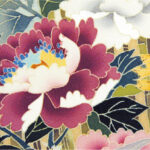

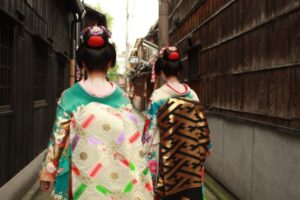
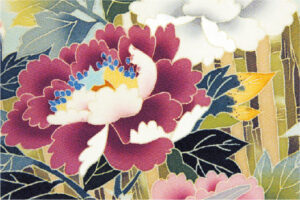
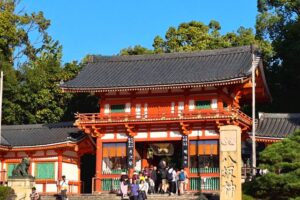
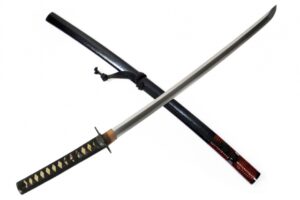

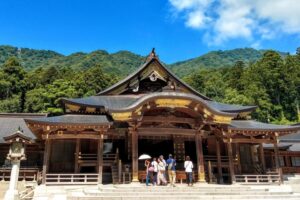
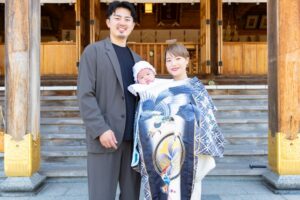
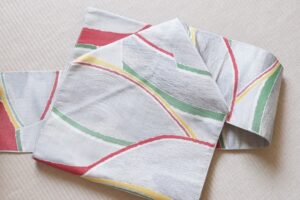
コメントを残す